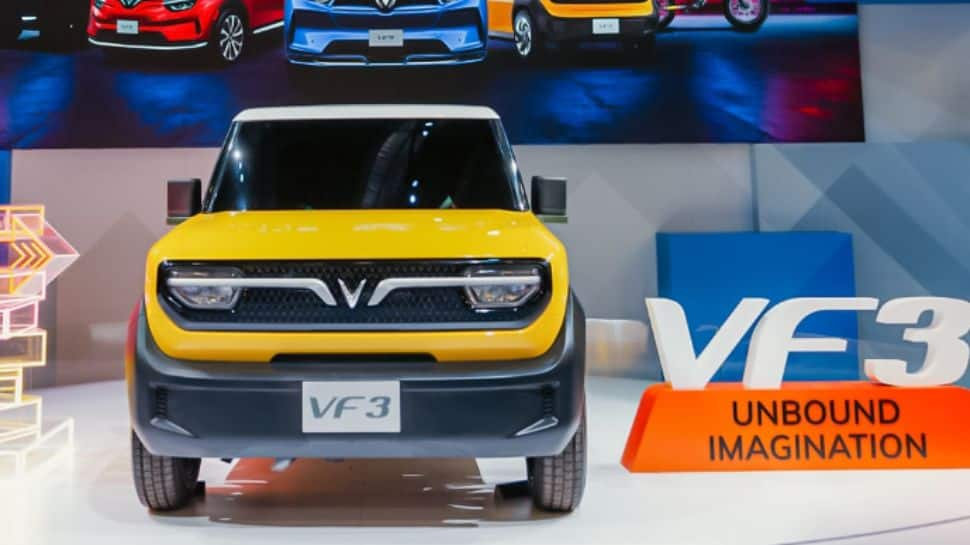VinFast, the Vietnamese electric vehicle (EV) manufacturer, is making significant strides in its expansion into the Indian market with the unveiling of its latest innovation, the VF3 micro electric SUV. Following the recent signing of a Memorandum of Understanding (MoU) with the Tamil Nadu Government, VinFast has now filed a patent for the VF3 in India, indicating a firm commitment to establishing a presence in the country’s burgeoning EV sector.
VinFast VF3: Design And Specifications
The VinFast VF3 electric SUV made its global debut at the 2024 Consumer Electronics Show in Las Vegas. It boasts a compact yet robust design, measuring 3,190mm in length, 1,679mm in width, and 1,620mm in height. With a tall and boxy stance accentuated by chunky bumpers, flared wheel arches, and a distinctive two-door layout, the VF3 presents a unique aesthetic in the micro SUV segment. The vehicle features rectangular headlights integrated into a blacked-out radiator grille, complemented by 16-inch gloss black steel wheels for a rugged yet stylish appeal.
While specific details about the electric powertrain have not been disclosed, the VF3 is anticipated to offer a single-charge range exceeding 200 km. Available in two trims – Eco and Plus – with a single-motor configuration, the VF3 promises a blend of efficiency and performance. Its interior is equipped with modern amenities including a 10-inch touchscreen infotainment system, Android Auto and Apple CarPlay connectivity, automatic climate control, and cruise control, ensuring a comfortable and connected driving experience.
In line with its ambition to penetrate the Indian market, VinFast has commenced the establishment of its first integrated manufacturing facility in Tamil Nadu. Spanning across 400 acres within the State Industries Promotion Corporation of Tamil Nadu (SIPCOT) industrial estate, the facility represents a significant investment of $500 million (Rs 4,165 crore) over five years. With a projected capacity of 150,000 vehicles annually, the facility is poised to create approximately 3,500 job opportunities, contributing to both economic growth and technological advancement in the region.
